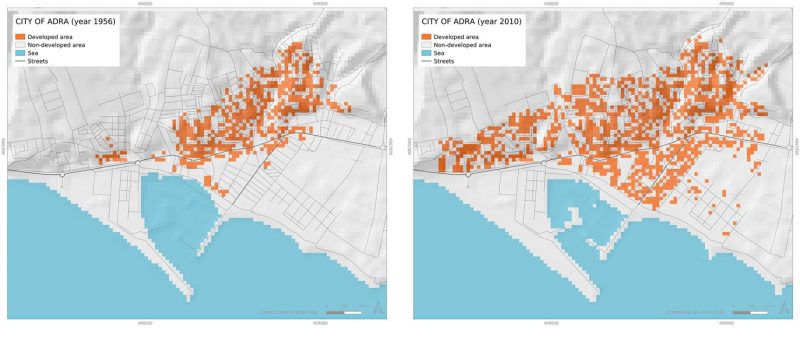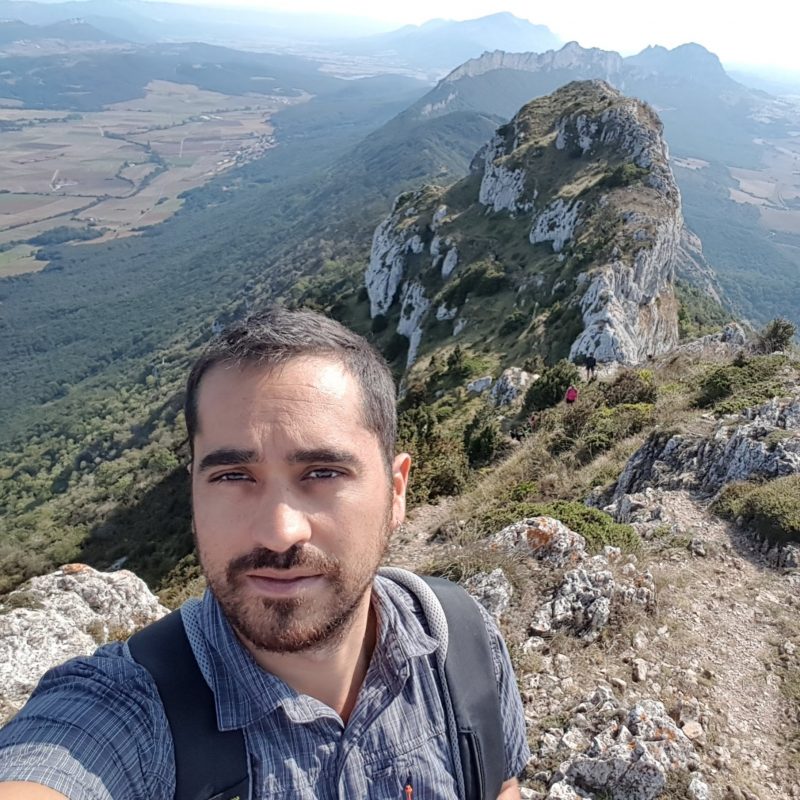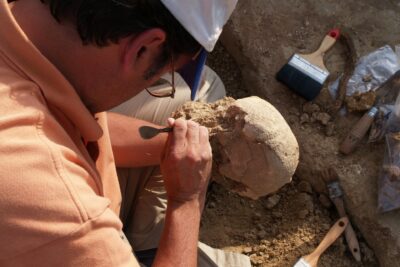Development of an urban simulator to estimate future seismic risk
A research team from the universities of Seville and Almeria applies a mathematical system to anticipate the consequences of a seismic catastrophe in order to have valid data for decision-making in urban planning. This tool may also be used for risk and climate change management, as well as for floods and other natural disasters.
A research team from the universities of Seville and Almeria has developed a simulator of the damage that seismic movements could cause to city buildings. This will make it possible to assess which urban expansion model is safest for the population. In addition, researchers confirm that the negative consequences are minimized if the refurbishment of buildings is increased, rather than the development of new areas.

The results show that the most vulnerable buildings are concentrated in the old, historic part of the city, whereas the strongest ones are located in the periphery, where new buildings are erected.
The novelty of the study lies in an approach to the city which combines an assessment of the seismic risk to the area with cellular automata models. These mathematical systems simulate urban development and land-use distribution, so they are able to predict future scenarios. In addition, they allow us to understand this evolution and provide decision makers with the necessary knowledge to anticipate new possibilities in the future.
The aim of the study is to evaluate which of the scenarios after an earthquake would pose a lower risk to the inhabitants. In the article «Future urban seismic risk scenarios using a cellular automata model», published in the journal European Planning Studies, the experts apply the model of cellular automata to seismic risk and thereby analyse urban growth and its influence on damage levels so as to implement better policies in land management.
In order to know the consequences of an earthquake, the way the territory is organised, according to experts, is one of the most important variables for the most accurate assessment of the damage that may occur. The cellular automata model consists of a grid with cells, where each one has a state and a set of rules and characteristics that determine the next phase. Their evolution depends on the behaviour of the others. In this manner one can simulate, for example, the behavioural pattern of a building given its specific location, structure, materials and inhabitants in different situations and, in addition, the impact that the rest of the neighbouring constructions, each of them with their own particular characteristics, would have on it.
In this way, the experts have configured the city as a system where the processes of expansion and renewal depend on the interactions between the factors that determine the fragility of the buildings and the exposure of the population over time. Daniel Navarro, researcher at the University of Seville and one of the authors of the article, remarked to Fundación Descubre: «With regard to seismic risk management, we could say that the frameworks to be promoted are those where the most vulnerable constructions are renewed and development in low-hazard areas is intensified».
Knowing how to grow in order not to fall
The case study selected was Adra (Almeria), where there are two sites in which seismic intensities of 7 and 7.5 have been obtained for a return period of 475 years. Buildings have also been typified by considering four kinds of vulnerability: from masonry structures, the weakest, to those made of reinforced concrete, the strongest. Furthermore, the age of a building determines how it was built, according to the techniques, materials and building codes of the time. All this, combined with more restrictive current legislation, makes newer buildings more resilient than older ones. Thus, the most vulnerable buildings are concentrated in the old, historic part of the city, whereas the strongest ones are located in the periphery, where new buildings are erected.
After calculating the current seismic risk, the cellular automata model yielded two different future scenarios. The first corresponds to a situation of ‘business as usual’, that is, what would happen if urban development continued as in previous years, considering similar rates of urban renewal versus expansion and the same amount of investment. The second environment corresponds to a situation of «support for urban renewal». This model envisages a greater preference for the construction of new buildings over the renovation of old ones than the previous scenario.
The studies confirmed that the average risk in the second scenario is lower than in the first, although the differences are not significant, due to the size of the city and the timespan being considered. These results suggest that urban renewal should be promoted to reduce the impact of an earthquake. If renewal increases, the most vulnerable buildings are replaced by more resistant ones and, at the same time, the growth of the city is reduced in areas with soft soil conditions, that is, those that are the most dangerous during an earthquake.
Based on this research, the scientists propose, on the one hand, the application of this methodology to a larger city with higher risk factors due to different forms of exposure and danger, such as floods or heat waves and, on the other hand, the formulation of a more sophisticated model that simulates changes in population distribution.
This work has been financed with internal funding by the research group in Applied Geophysics of the University of Almeria and the team of Coastal Planning and Territorial Information Technologies of the University of Seville.
References
Daniel Navarro, Manuel Navarro and Ismael Vallejo. ‘Future urban seismic risk scenarios using a cellular automata model’. European Planning Studies. 2019
Additional documentation
Últimas publicaciones
El grupo ATLAS de la Universidad de Sevilla participa en un estudio internacional que arroja nueva luz sobre la diversidad genética de la sociedad andalusí entre los siglos VIII y XI d. C y refuerza la relevancia histórica del dolmen como espacio sacro usado a lo largo del tiempo.
Un equipo de investigación de la Universidad de Almería y la Universidad Nacional de Mar del Plata en Argentina ha encapsulado proteínas activas extraídas de los residuos de la industria pesquera. Con esta forma esférica, mantienen su actividad y estabilidad durante más de dos meses para emplearse como base en quitamanchas o nutrición animal.
Sigue leyendoSe trata de un sistema innovador de indicación visual del tiempo de exposición en mascarillas de protección facial. Una invención que ha sido desarrollada el grupo de investigación OMEGAs, liderado por el profesor del Centro de Nanociencia Tecnologías Sostenibles (CNATS) de la Universidad Pablo de Olavide (UPO) de Sevilla José María Pedrosa. También han participado los investigadores Javier Roales y David Rodríguez, en colaboración con el empresario sevillano José Antonio Rodríguez, quien ya ha iniciado los primeros pasos para su comercialización.
Sigue leyendo





